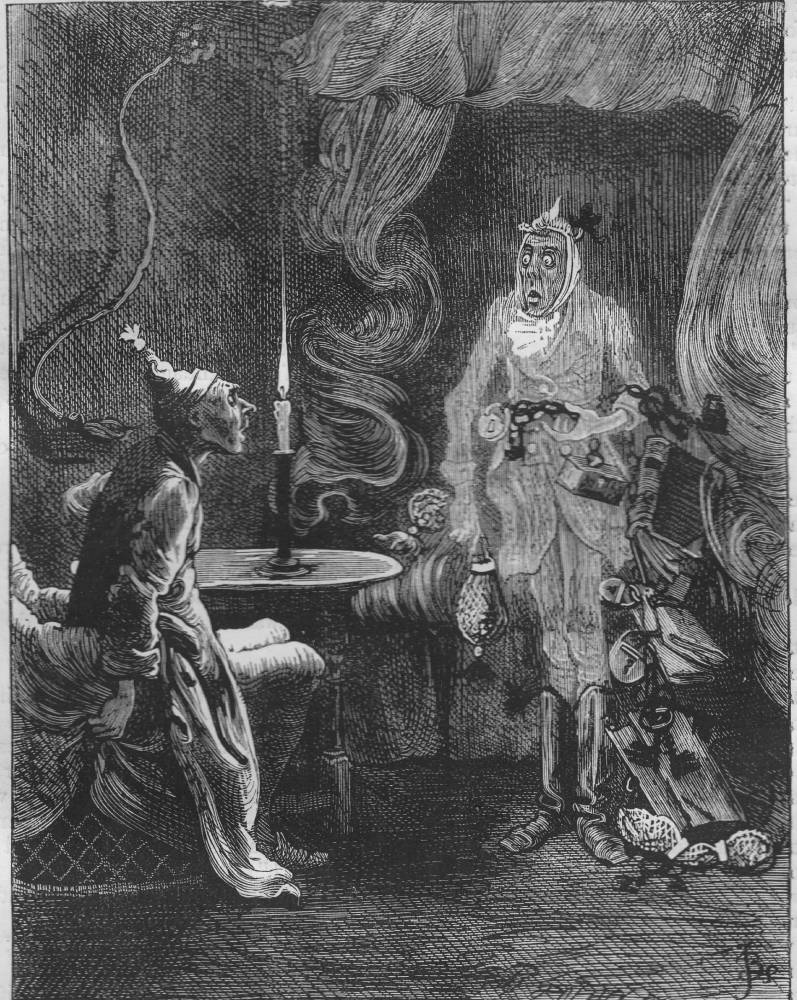This Christmas season I read Charles Dicken’s Christmas Carol to my kids for the first time. It’s been a fantastic experience for me (and it seems like for them, at least the older ones), and one I’d recommend to parents in general.[1] As I have been every time I read this great work, I’ve been reminded by just how well written this little, world-changing gem of a story is.
One particular aspect of the story that struck me this year is the way the entire story hinges on exploring the past of one man. This man is, of course, Ebenezer Scrooge. And the genius of The Christmas Carol is, in part, in the way it takes a grumpy old geezer who nobody likes in Stave 1 and starts to peel away layer after astonishing layer of his life and character until we find so much sympathy with the old fellow that we are cheering out loud by the end of the book at his joyful reform. Dickens creates a man we’d pass hastily in the street and hope not to ever give a second thought. But by delving into his past life, the people his present life touches, and the future his decisions will help create, he makes him memorable enough to become a Christmas icon.

The lesson here for writers is that this exploration of a character’s past, and the people connected to him now, forms the roots of good character development. It’s easy to write about characters as if they are only a means to make the story happen, and forget they’ve had years of interesting life experiences behind them which makes them who they are. A good writer doesn’t presume that fact but shows it to his reader in some way. This doesn’t mean you have to write an entire book about one character. You can mention small facts in passing, or have your character mention a memory that reminds readers this guy is interesting. He has lived. There are other people who care about him. The choices he makes will change other people.
The lesson for human beings: acknowledgment of a real-life character depth in every person you meet is the root of empathy. Other people are more complex than we tend to admit. Every man, woman, and child you meet – whether passing by in a car, or standing in a grocery store line, or going to the same church with – every one of them has a story. Every one of them has years of stories they could tell us if asked, just as interesting as the story we live now. Each one has people that love them (or hate them) right now, possibly all around the world. And each one has the power to create lasting ripples in the pool of many lives.

Remember that when you meet someone you don’t like and are tempted to write off quickly: try to treat them with courtesy. Remember it when you meet somebody you do like next time and take time to get to know them better. Remember it next time you open a history book and see lists of names long dead. Those were real people with real lives as well. Open your eyes to the multilayered beauty of humanity living all around you, and appreciate the wonder of this life God has made.

Remember it next time you find yourself beside a grieving human being. Part of the power of our Great High Priest Jesus, in being able to comfort us in affliction, is that he understands how complex affliction it can be for us, because He went through it too.
“Therefore he had to be made like his brothers in every respect, so that he might become a merciful and faithful high priest in the service of God, to make propitiation for the sins of the people. For because he himself has suffered when tempted, he is able to help those who are being tempted.” – Hebrews 2:17-18
On a different note, I commend to you the version of Christmas Carol with Bible study annotations by Stephen Skelton. It’s the one we’re reading now as a family. It’s a simple little book but has some very thoughtful Bible study tie-ins we’ve benefited from, as well as helpful historical annotations.

[1] But remember: the Carol is best read with lots of drama and voice acting and any sound effects you can manage to make up on the spot!
Be First to Comment